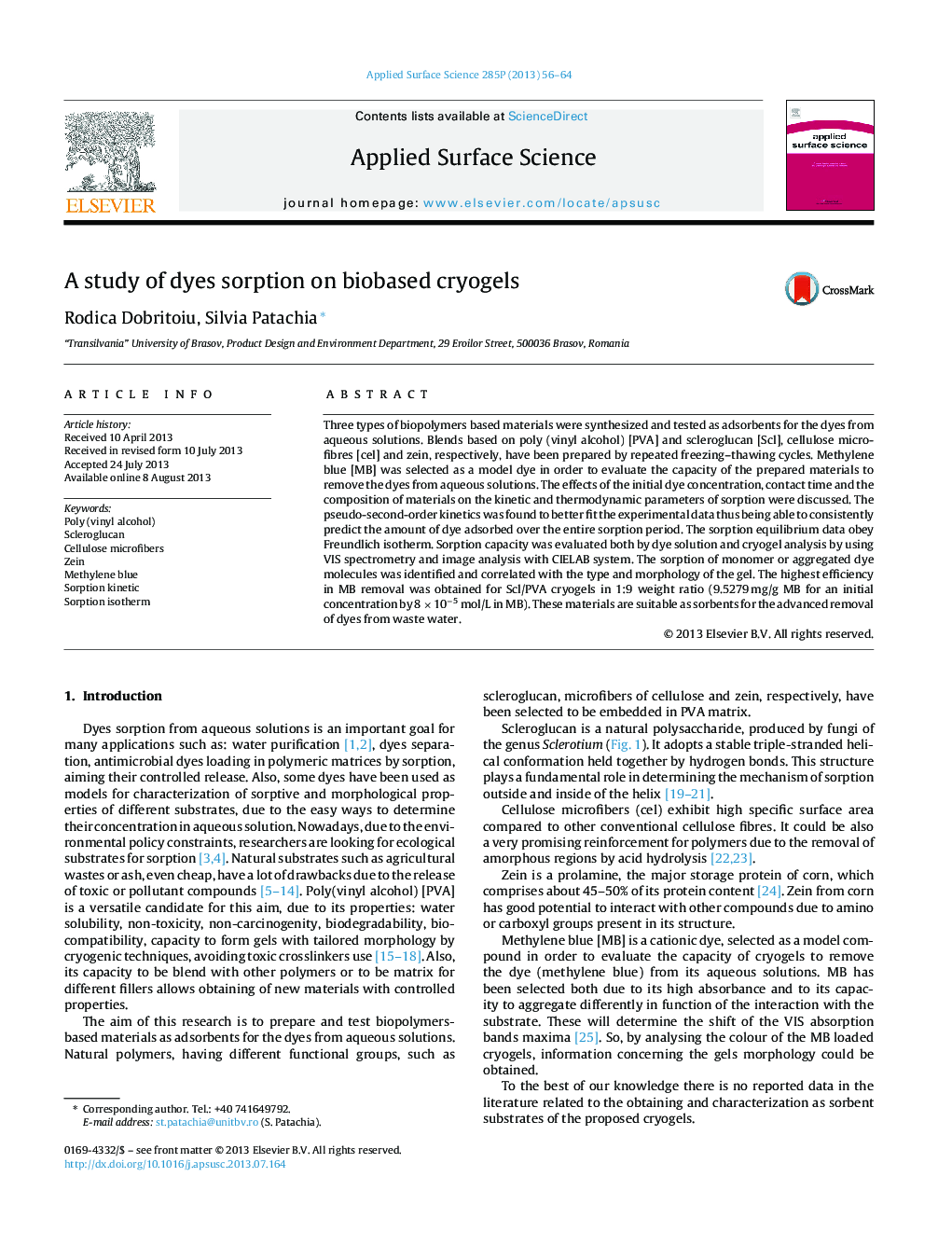| Article ID | Journal | Published Year | Pages | File Type |
|---|---|---|---|---|
| 5362455 | Applied Surface Science | 2013 | 9 Pages |
Abstract
Three types of biopolymers based materials were synthesized and tested as adsorbents for the dyes from aqueous solutions. Blends based on poly (vinyl alcohol) [PVA] and scleroglucan [Scl], cellulose micro-fibres [cel] and zein, respectively, have been prepared by repeated freezing-thawing cycles. Methylene blue [MB] was selected as a model dye in order to evaluate the capacity of the prepared materials to remove the dyes from aqueous solutions. The effects of the initial dye concentration, contact time and the composition of materials on the kinetic and thermodynamic parameters of sorption were discussed. The pseudo-second-order kinetics was found to better fit the experimental data thus being able to consistently predict the amount of dye adsorbed over the entire sorption period. The sorption equilibrium data obey Freundlich isotherm. Sorption capacity was evaluated both by dye solution and cryogel analysis by using VIS spectrometry and image analysis with CIELAB system. The sorption of monomer or aggregated dye molecules was identified and correlated with the type and morphology of the gel. The highest efficiency in MB removal was obtained for Scl/PVA cryogels in 1:9 weight ratio (9.5279Â mg/g MB for an initial concentration by 8Â ÃÂ 10â5Â mol/L in MB). These materials are suitable as sorbents for the advanced removal of dyes from waste water.
Keywords
Related Topics
Physical Sciences and Engineering
Chemistry
Physical and Theoretical Chemistry
Authors
Rodica Dobritoiu, Silvia Patachia,
